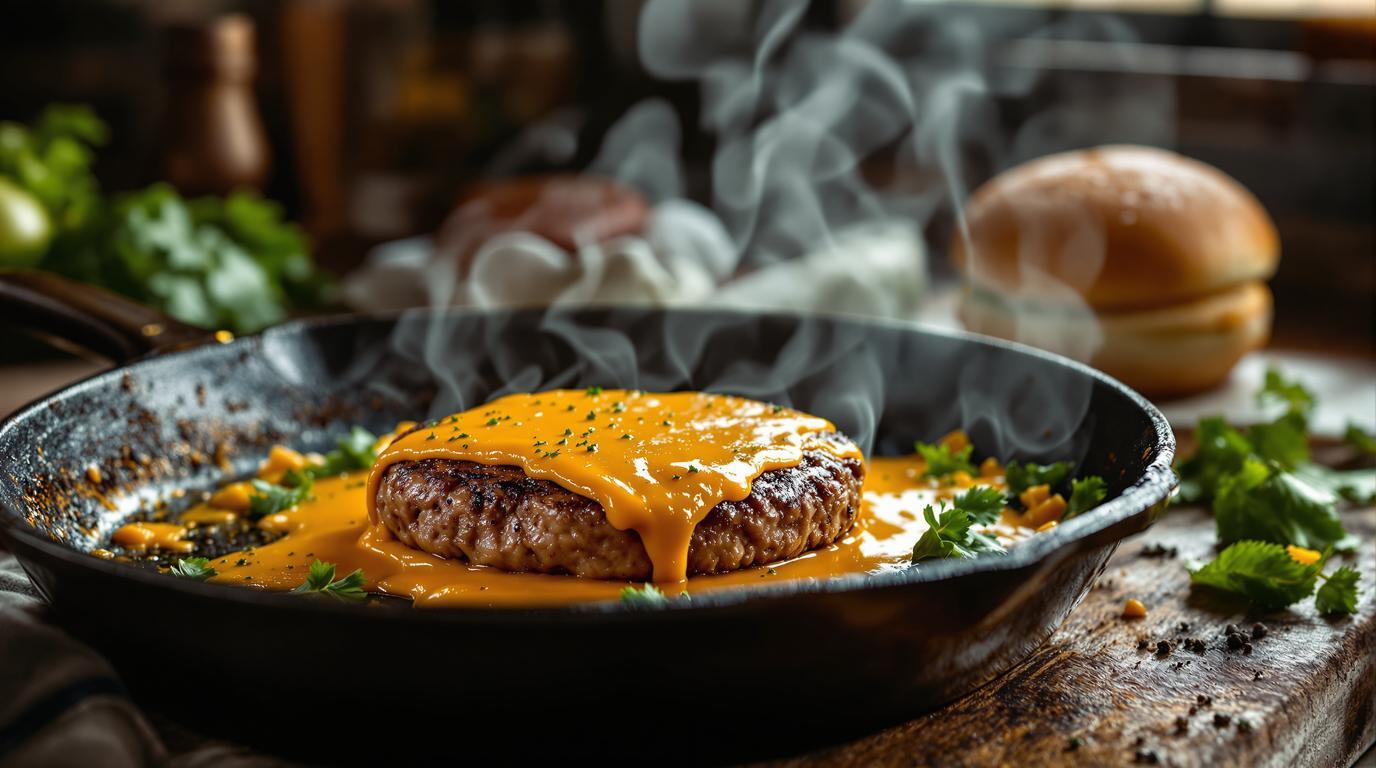There’s something almost magical about a perfectly crafted cheeseburger that transcends its humble ingredients. In my twenty years as a chef, I’ve prepared elaborate seven-course tasting menus for dignitaries, but the dish that consistently draws the most passionate reactions is a properly executed cheeseburger. My grandfather, a short-order cook during the Depression, taught me that respect for simplicity is what separates good cooks from great ones. His secret? “Let the beef speak for itself, Alex, but make sure it has something worthwhile to say.”
The Story Behind the Classic American Cheeseburger 📖
The cheeseburger as we know it emerged in the 1920s, with Lionel Sternberger often credited for its invention in Pasadena, California. What began as a diner staple quickly became America’s culinary ambassador to the world. While the concept is simple—beef patty, cheese, bun—regional variations showcase America’s diverse palate. In the Midwest, they sometimes mix shredded cheese directly into the raw meat, while California versions feature avocado and specialty greens. My recipe honors the traditional approach that grandmothers across America have perfected for generations—simple, juicy, and cooked in a cast-iron skillet. If you’re looking for more adventurous burger options, our Smoky Paprika Burger might intrigue your palate.
Essential Ingredients 🧾
The beauty of a classic cheeseburger lies in quality ingredients handled with care:
- Ground beef (80/20): 1½ pounds (675g) – The fat ratio is non-negotiable for juiciness
- Yellow onion: ½ cup (80g) minced – Provides aromatic complexity
- Worcestershire sauce: 1 teaspoon (5ml) – Adds depth and umami
- Fresh garlic: 1 teaspoon (3g) minced – Creates aromatic foundation
- Garlic powder: 1 teaspoon (3g) – Reinforces beef flavor
- Seasoned salt: 1 teaspoon (5g) – Balanced seasoning blend
- Sharp cheddar cheese: 4 slices – Creamy counterpoint to beef
- Burger buns: 4 – Preferably brioche or potato rolls
Chef’s Note: No Worcestershire sauce? Create a substitute with 2 parts soy sauce to 1 part balsamic vinegar with a pinch of brown sugar. And contrary to popular belief, adding egg isn’t traditional in classic burger recipes—it’s the proper meat-to-fat ratio that maintains burger integrity.
Step-by-Step Instructions 📝
The perfect cheeseburger requires restraint and attention to detail:
- Remove ground beef from refrigerator 20 minutes before cooking to approach room temperature.
- In a large bowl, gently combine beef, minced onion, Worcestershire sauce, garlic, garlic powder, and seasoned salt with your fingertips—overworking creates tough burgers.
- Divide mixture into four equal portions (approximately 6oz/170g each). Form patties slightly larger than your buns, as they’ll shrink while cooking. Press your thumb into the center of each patty to create a shallow dimple—this prevents the dreaded “burger dome.”
- Heat a cast-iron skillet over medium-high heat until you can feel warmth radiating an inch above the surface.
- Season patties with salt just before cooking (earlier salting draws out moisture).
- Cook patties 3-4 minutes per side for medium (internal temperature 145°F/63°C), turning only once.
- Place cheese on patties during the final minute of cooking; cover briefly with a metal bowl to accelerate melting.
- Meanwhile, lightly toast your buns in a separate pan or on the outer edges of your skillet.
For hearty appetites, consider serving alongside our Slow-Braised Beef Ragout for a truly indulgent feast.
Chef’s Secret Techniques 🤫
After preparing countless burgers in professional kitchens, I’ve identified the crucial differences between good and transcendent cheeseburgers:
- Never press burgers with your spatula during cooking—you’re literally squeezing out flavor and moisture.
- Handle the meat mixture with cool hands and minimal manipulation; warmth from overworking activates protein binding that toughens the texture.
- Allow burgers to rest 2-3 minutes after cooking—like all proteins, this redistribution of juices is essential.
- Season the patty, not just the mixture. A final sprinkle of flaky salt before cooking creates superior crust development.
These burger techniques echo principles found in our French-Style Shepherd’s Pie where meat preparation makes all the difference in the final dish.
Serving & Presentation Tips 🍽️
A cheeseburger is both comfort food and blank canvas. My preferred classic arrangement starts with a lightly buttered, toasted bottom bun, a smear of mayo mixed with minced pickles, the cheese-topped patty, thinly sliced tomato, crisp lettuce, thinly sliced red onion, and a light spread of mustard on the top bun. Serve immediately alongside twice-cooked fries or homemade coleslaw.
Like our Depression-Era Banana Bread demonstrates, sometimes the most beloved recipes come from simple beginnings. Remember that while technique matters, there’s something deeply personal about how you like your burger. Trust your palate, adjust to your preferences, and most importantly—enjoy every bite of this American classic that’s earned its place in our culinary heritage.
